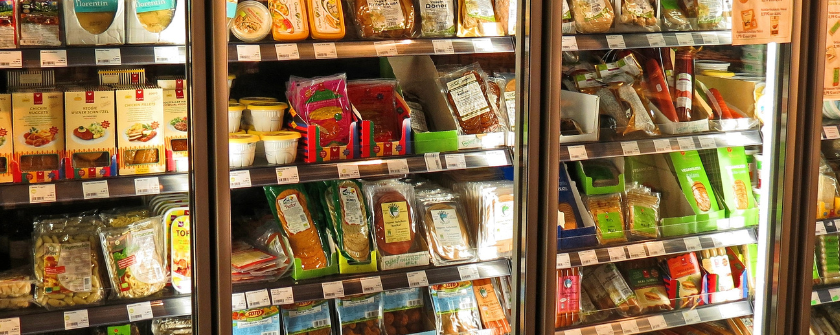Navigating the Complexities of Processed and Ultra-Processed Foods

Ultra-processed foods (UPFs) are a hot topic these days, sparking debates and raising concerns. Originating from the NOVA classification system introduced in Brazil in 2009, UPFs have been scrutinised for their potential impacts on health. However, as we delve deeper into this discussion, it becomes evident that the issue is far more nuanced than a simple dichotomy of “good” vs. “bad” foods.
Understanding the NOVA Approach
The NOVA classification system offers a straightforward, yet subjective approach to categorising foods based on the extent and purpose of processing. It divides foods into four broad categories:
- Unprocessed or Minimally Processed Foods: These are original whole foods with minimal processing and no additives, such as fresh meat, fruits, vegetables, grains and dairy products.
- Processed Culinary Ingredients: This category includes substances like salt, sugar, refined oils, and other ingredients derived from whole foods. These foods are rarely consumed on their own.
- Processed Foods: Encompassing categories 1 and 2, this group includes foods subjected to various processing steps like salting, canning, fermenting, and freezing, as well as prepared foods. Examples are canned or frozen vegetables, fresh bread and cheese.
- Ultra-Processed Foods (UPFs): These are industrial formulations made entirely from food derivatives, chemical substances, and a sequence of processes that bear little resemblance to the original food material. UPFs often contain additives aimed at enhancing palatability and appeal. Example foods in this category are soft drinks, sweet and savoury snacks, reconstituted meat products, packaged bread, ready meals and most breakfast cereals.
Challenges and Controversies
Despite its simplicity, the NOVA classification system faces several challenges and controversies:
- Lack of Consensus: Studies have shown a striking lack of consensus when categorising foods using the NOVA approach. In a recent study, 98% of nutrition professionals placed foods in different categories, only agreeing to the categorisation of 4 out of 231 food items. This inconsistency is largely due to the definitions allowing room for own beliefs to affect classification; this can lead to false associations and consumer confusion.
- Overlooking Nutrient Profile: The system fails to account for the nutrient profile of foods, potentially leading to the exclusion of nutritionally adequate options that may be protective and essential for some individuals and populations.
- One-sided Approach: According to the advocates of the NOVA classification, the elimination of processed foods is recommended with the aim to “eat clean”. This approach is unrealistic in the current food environment and fails to recognise the important contribution of processed foods to the wider population, for example people who have limited time, money and/or ability to prepare meals. At the same time, it cultivates fear by stigmatising all processed foods as unhealthy.
Ultra-Processed Food Research
When evaluating research on the impact of processed food and UPFs on health outcomes, it’s crucial to mention that the majority of studies are observational. Observational studies generate research hypotheses but cannot establish causality. Further, controlling for covariates and confounding factors such as diet quality, energy density, lifestyle factors (e.g. smoking, activity levels, alcohol intake, stress) is paramount. Failing this, there are uncertainties about whether observed effects are directly attributable to food processing or mediated by these variables. The majority of studies using the NOVA approach fail to control for these parameters. More recent studies addressing this yield mixed results in disentangling these complex interactions, highlighting the need for further investigation and refinement in study methodologies.
A Holistic Perspective
In evaluating the role of food processing in our diets, it’s crucial to adopt a holistic perspective that considers various factors:
- Sustainability and Equity: Balancing concerns about health with sustainability and equity highlights the need for a more comprehensive approach beyond simple categorisations.
- Motivations Behind Processing: Understanding the motivations driving food processing, such as profitability, palatability and convenience but also safety, affordability, increased self-life and nutrient bioavailability, sheds light on the complex interplay between economics, food production, and health outcomes.
- Objective Nutritional Evaluation: Rather than relying solely on processing as a proxy for healthfulness, recommendations should be based on an objective appraisal of a food’s nutritive value and its potential to support healthy dietary patterns.
- Balanced, Flexible vs All-or-nothing Approach: The stigmatisation of processed foods disrupts the development of a balanced, flexible relationship with food as it divides foods into two categories: “good” (fresh) and “bad” (processed).
Moving Forward
As we navigate the complexities of our food environment, it’s essential to approach processed foods with caution and critical thinking:
- Balanced Recommendations: Nutrition guidelines should aim to strike a balance between promoting healthful choices and ensuring access to important foods, acknowledging the multifaceted nature of dietary decisions.
- Transparency and Education: Empowering individuals with knowledge about food processing and its implications can help them make informed choices that align with their health, values and individual circumstances.
- Continuous Evaluation: The conversation surrounding processed foods should remain open to new research and insights, allowing for ongoing refinement of dietary recommendations and public health strategies.
Conclusion
In conclusion, although the NOVA method offers a simplified framework for classifying foods based on the extent of their processing, it fails to recognise the complexity of dietary choices and their effects on health and our relationship with food. By embracing a more holistic approach based on high quality evidence we can better navigate the ever-evolving landscape of nutrition support the public to make flexible, informed decisions without instilling fear or guilt.
Click here to find out how I can help you rebuild your relationship with food.
References
- Forde CG. Beyond ultra-processed: considering the future role of food processing in human health. ProcNutr Soc. 2023 Sep;82(3):406-418. doi: 10.1017/S0029665123003014. Epub 2023 Jun 1. PMID: 37654079.
- Braesco V, Souchon I, Sauvant P, Haurogné T, Maillot M, Féart C, Darmon N. Ultra-processed foods: how functional is the NOVA system? Eur J ClinNutr. 2022 Sep;76(9):1245-1253. doi: 10.1038/s41430-022-01099-1. Epub 2022 Mar 21. PMID: 35314769; PMCID: PMC9436773.
- Chen X, Chu J, Hu W, Sun N, He Q, Liu S, Feng Z, Li T, Han Q, Shen Y. Associations of ultra-processed food consumption with cardiovascular disease and all-cause mortality: UK Biobank. Eur J Public Health. 2022 Oct 3;32(5):779-785. doi: 10.1093/eurpub/ckac104. PMID: 36006020; PMCID: PMC9527958.
- Cordova R, et al. Consumption of ultra-processed foods and risk of multimorbidity of cancer and cardiometabolic diseases: a multinational cohort study. Lancet Reg Health Eur. 2023 Nov 14;35:100771. doi: 10.1016/j.lanepe.2023.100771. PMID: 38115963; PMCID: PMC10730313.
- Freisling H, Córdova R, Aune D, Wagner KH. Ultra processed foods and cancer-authors’ reply. The Lancet Regional Health – Europe. 2024 (Mar); 38, 100865. Doi: https://doi.org/10.1016/j.lanepe.2024.100865. Epub 2024 Feb 12
0 Comment
 Your Greek Dietitian Online
Your Greek Dietitian Online
Leave a Reply